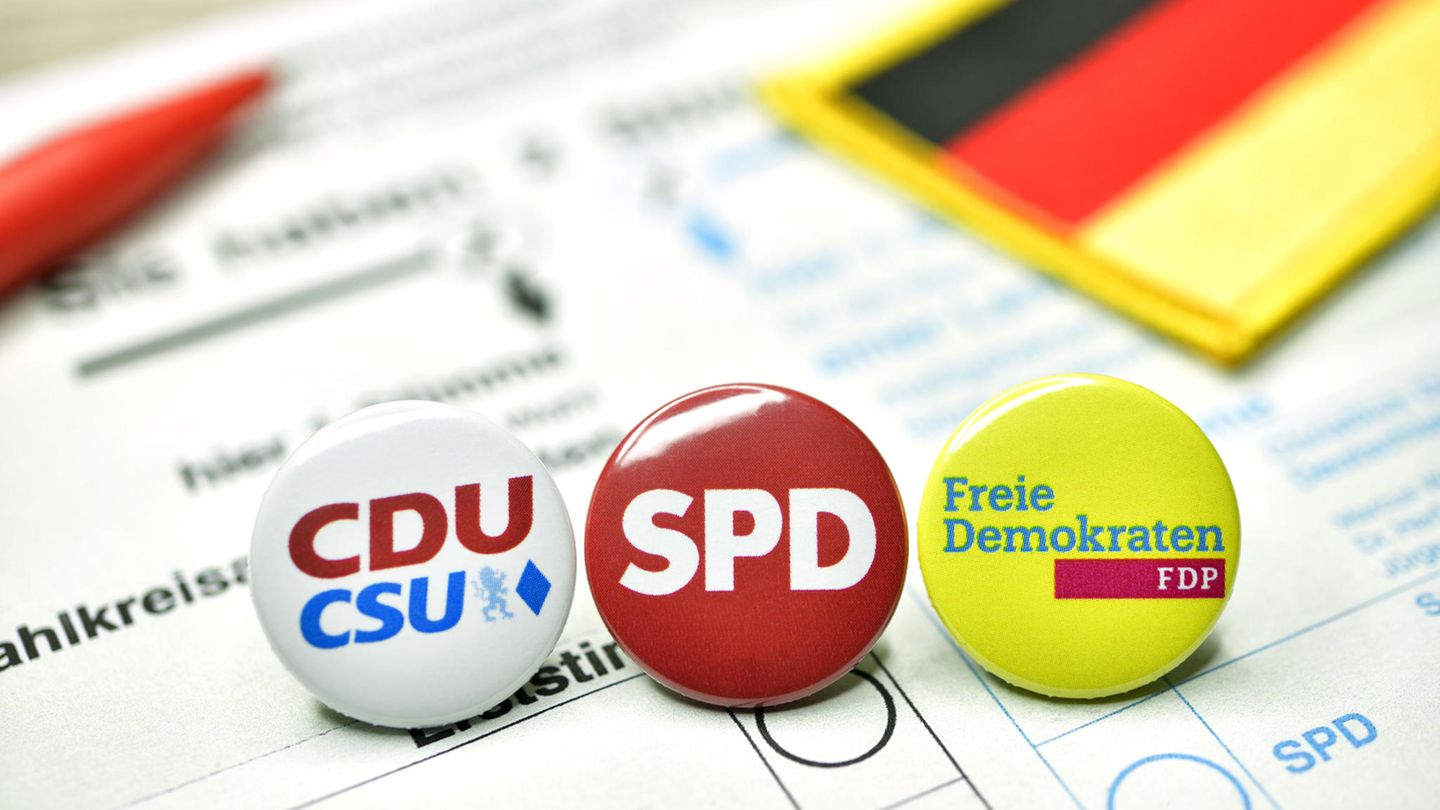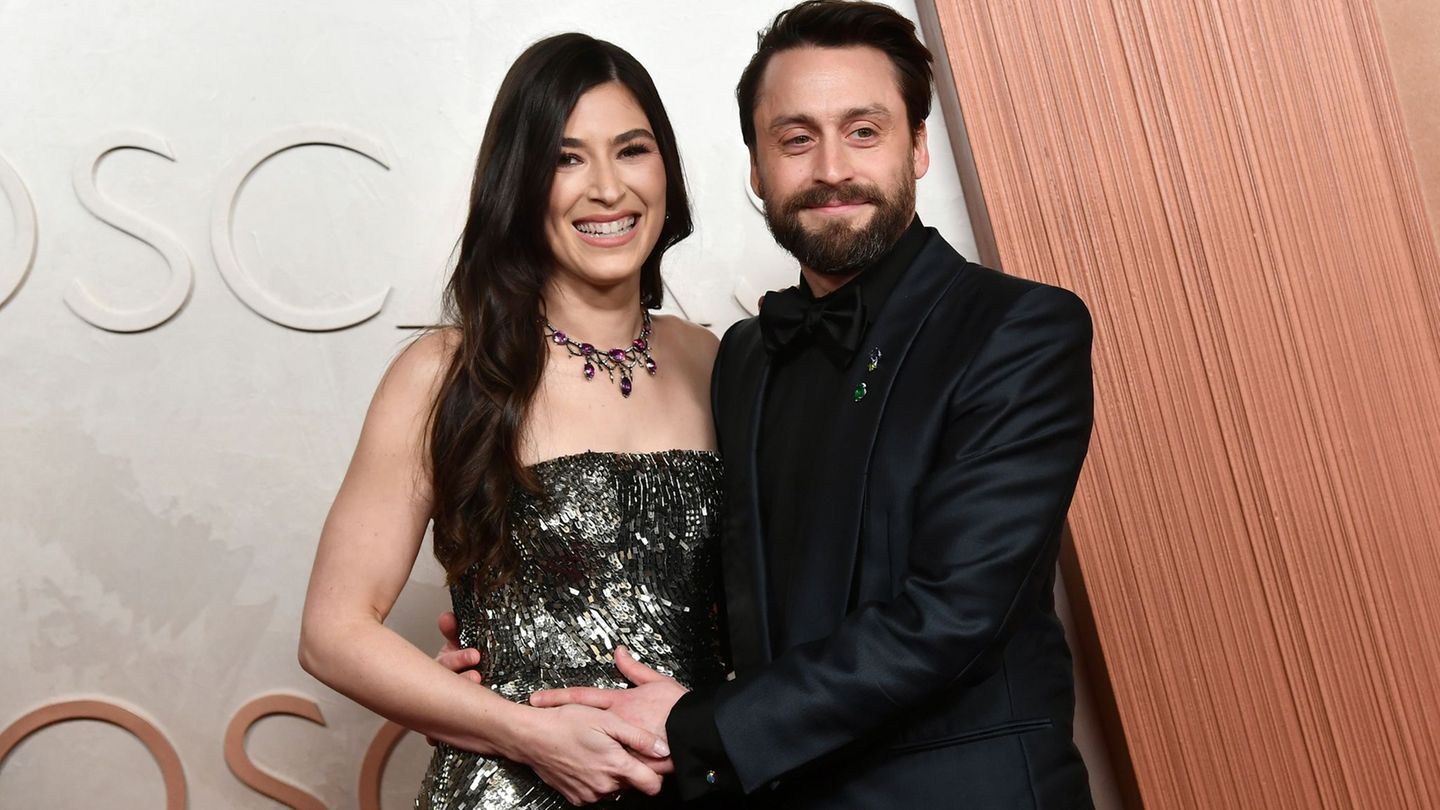Who can and wants to with whom? This question remains largely unanswered even after the last talk show round with all the top candidates. An overview of the different constellations.
After the general election, it could become politically confusing: According to the current opinion polls shortly before the election, mathematically it would be enough for a new edition of the grand coalition. Because such an alliance is anything but popular, as things stand, a three-way alliance is more likely.
“Traffic light”: SPD, Greens and FDP
The SPD and the Greens are largely pulling together on many issues – such as the wealth tax or the relaxation of the debt brake. The FDP would, however, have to overcome a great deal of effort to govern with the Greens and Social Democrats – their boss Christian Lindner stated that the goal was to prevent a “left shift in politics” with higher taxes. He does not rule out a traffic light coalition – but the FDP would charge a very high price for it, such as the post of Federal Minister of Finance.
But the SPD and the Greens do not agree on everything either – SPD Chancellor candidate Olaf Scholz does not want to commit to an earlier coal exit than 2038. There is an example of a functioning traffic light coalition at the state level: in Rhineland-Palatinate.
“Jamaica”: Union, Greens and FDP
In this constellation it would be the Greens who would have to overcome a lot, after all there is a lot of overlap between the CDU / CSU and FDP – they could try to slow down the Greens in their climate and social policy, for example. “Jamaica” is burdened with a heavy mortgage: In 2017 the negotiations on such an alliance crashed because the FDP broke them at the last minute.
Although FDP leader Christian Lindner can hardly afford to pinch again, the substantive differences with the Greens remain – especially because they also want to make industry accountable for climate protection. However, there is an example of a functioning Jamaica alliance – in Schleswig-Holstein.
Red-green-red
The three left-wing parties have a lot in common in social policy, health and pensions, but also in tax policy. The decisive hurdle for red-green-red would be foreign policy: the left is hostile to NATO and the Federal Armed Forces – it has recently received a lot of criticism for abstaining from the vote on the evacuation mission in Afghanistan in the Bundestag.
Green candidate Annalena Baerbock has openly questioned the left’s ability to govern. SPD Chancellor candidate Olaf Scholz does set conditions – such as a clear commitment by the Left Party to NATO – but is criticized because he does not exclude red-green-red. But if he did that, he would probably get into huge trouble with his own party.
Tripartite alliances with the Union and the SPD
Only if the Union and the SPD do not have a majority could two three-party constellations come into play, in which the previous coalition partners are involved: The “Germany” coalition made up of the Union, SPD and FDP and a “Kenya” alliance made up of the two previous government partners and the Greens.
For both variants, the Groko-tired SPD would have to jump over its shadow – which should be much easier for you with “Kenya”. However, there are no insurmountable hurdles in terms of content for either alliance.
Big coalition
There are no insurmountable hurdles between the previous coalition partners. But the SPD in particular has little inclination to reissue the unloved alliance with the Union – even if its candidate Olaf Scholz becomes chancellor. However, the new GroKo infusion is not completely excluded, after all, the three possible three-way options are also considered difficult.
David William is a talented author who has made a name for himself in the world of writing. He is a professional author who writes on a wide range of topics, from general interest to opinion news. David is currently working as a writer at 24 hours worlds where he brings his unique perspective and in-depth research to his articles, making them both informative and engaging.




